
LASEK (Laser Epithelial Keratomileusis) is a relatively new laser vision procedure that combines elements of PRK and LASIK, and may offer some advantages over both. Instead of removing the epithelium (the thin layer of protective skin that covers the cornea) like in PRK, a flap of surface epithelium is loosened with a diluted alcohol solution and moved aside. The surface under the epithelium is then treated with the laser and the epithelial flap is returned to its original position. Using the epithelium flap as a natural protective bandage with LASEK, as opposed to completely removing the epithelium as with PRK, may improve healing and the incidence of postoperative haze.
The margin of safety with LASEK may be greater than that with LASIK as the need for a microkeratome is eliminated, so there’s no risk of flap complications.
LASEK removes tissue within the cornea to treat low to high levels of nearsightedness, farsightedness and astigmatism.
To treat nearsightedness, the steep cornea is made flatter by removing tissue from the center of the cornea. This moves the point of focus from in front of the retina to directly on the retina.
To treat farsightedness, the flat cornea is made steeper by removing tissue outside of the central optical zone of the cornea. This moves the point of focus from behind the retina to directly on the retina.
To treat astigmatism, the cornea is made more spherical — like a basketball instead of a football. This eliminates multiple focusing points within the eye and creates one point of focus on the retina. Astigmatism can be treated at the same time as nearsightedness and farsightedness.
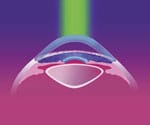
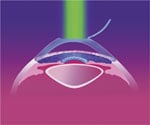
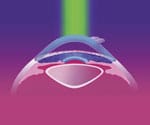
Lasek Is For Those Who:
- want to reduce or eliminate their dependence on glasses or contacts
- are over 18 years of age
- have had a stable eye prescription for at least one year
- have no health issues affecting their eyes
- have wide pupils
- have corneas too thin for LASIK
- who do not want LASIK because it requires a microkeratome
What To Expect On Surgery Day:
You will arrive at the laser center about an hour prior to your procedure. Once you have been checked-in and settled comfortably, you will be prepared for surgery. The area around your eyes will be cleaned and a sterile drape will be applied. You may be given a sedative to help you relax. Eye drops will be used to numb your eyes; no injections or needles are used. When your eye is completely numb, an eyelid holder will be placed between your eyelids to keep you from blinking.
Next, a specially designed instrument will be placed on your eye around the area that will have the laser applied. Then a diluted alcohol solution will be placed in the instrument, which loosens the epithelium from the surface of the cornea. The epithelium is then pushed to the side.
You will be asked to look directly at a target light while the laser reshapes your cornea. The laser will be programmed with the information gathered in your pre-operative exam. The laser treatment will be completed in less than a minute or two, depending on the amount of correction needed. To finish the procedure, your doctor will smooth the flap back into place. A temporary bandage contact lens will be used to keep the epithelium in place and reduce post-operative discomfort.
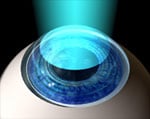
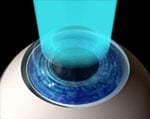
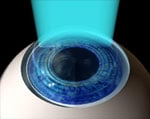
Following your procedure, your eye(s) may be shielded for protection. Your vision will probably be a little blurry at first, so someone will need to drive you home. You should relax for the rest of the day. You may experience mild to moderate discomfort for two or three days. You will be given instructions on how to manage this discomfort before you leave. Most patients resume normal activities within two to three days. Vision can fluctuate for up to six months.
Realistic Expectations:
The decision to have LASEK is an important one that only you can make. The goal of any refractive surgical procedure is to reduce your dependence on corrective lenses. However, we cannot guarantee you will have the results you desire. The vast majority of our patients are extremely happy with their vision after LASEK and can do most activities without dependence on corrective lenses.
Serious complications with LASEK are extremely rare. LASEK is a safe, effective and permanent procedure, but like any surgical procedure, it does have some risks. Many of the risks and complications associated with this procedure can be reduced or eliminated through careful patient selection and thorough pre-operative testing using the latest diagnostic technology.
After LASEK, you may experience some visual side effects. These visual side effects are usually mild and most often diminish over a few days to a few weeks. But there is a slight chance that some of these side effects won’t go away completely, such as feelings of dryness, glare and halos.
After a thorough eye exam, you and your doctor will determine if LASEK is an option for you. If you are a good candidate, you will be given additional information about the procedure that will allow you to make an informed decision about whether to proceed. Be sure you have all your questions answered to your satisfaction.
Alternatives To Lasek
LASEK is not the only surgical procedure designed to correct nearsightedness, farsightedness and astigmatism. To learn about other procedures go to the surgical and laser vision correction procedures section of our Web Site. If you would like to learn more about vision correction procedures from sources other than our practice, we encourage you to link to a number of Web sites we feel provide factual and up-to-date information. You may also choose to make an appointment or request additional information to learn more about this exciting procedure.
We offer a number of finance options and affordable payment plans. It is easy to apply online and receive credit approval before you schedule an appointment.
Get In Touch With Us:
To learn more about Hattiesburg Eye Clinic and our services please call us at 601 268 5910 or toll-free at 800 624 8254 or schedule a consultation.


